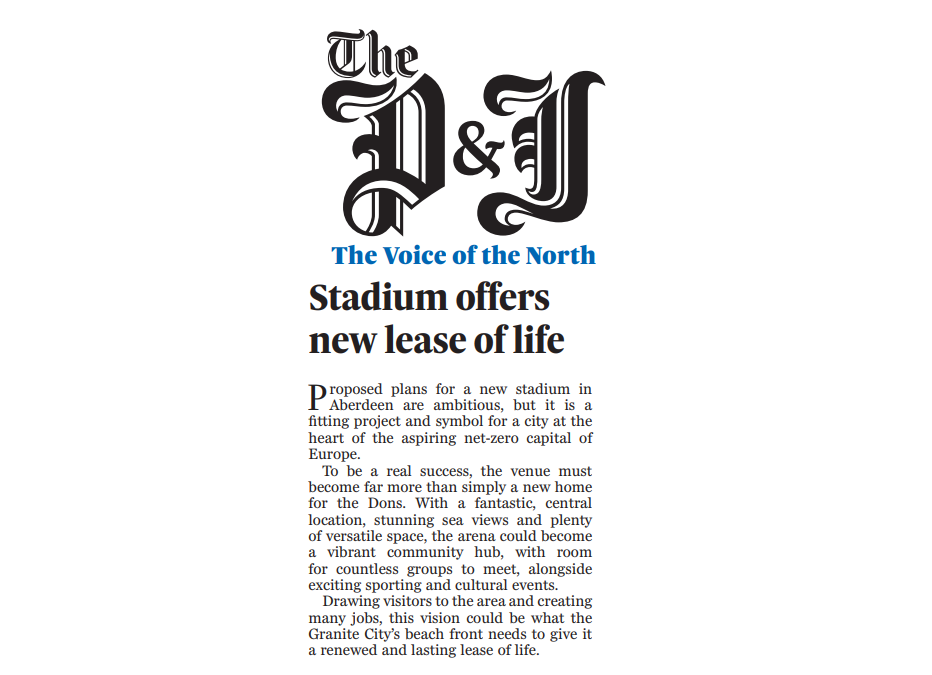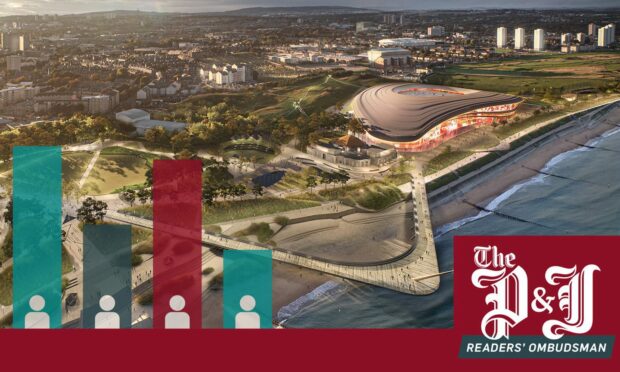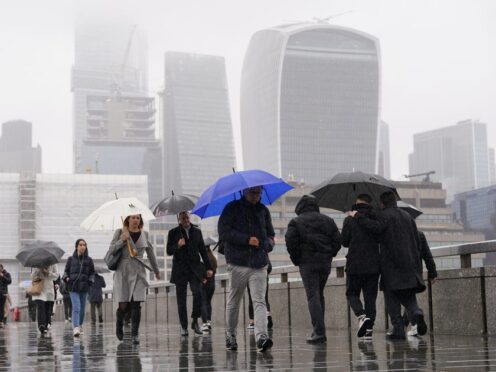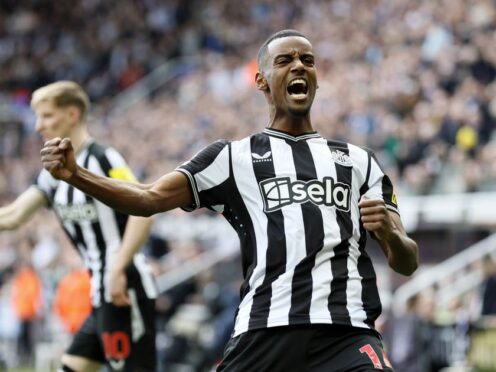What proportion of our readers would be happy for their taxes to go towards building a new stadium for Aberdeen FC?
It is a question that has exercised minds since we published the results of an online poll on one of the hottest debates in the city.
A majority who took part said they backed the use of public cash to help realise the blueprint for the replacement of Pittodrie.
Opponents though were quick to reach for their yellow cards and cry “foul!”.
“A vote was conducted on around 1,200 people with a result of 58% in favour,” one of a number of correspondents pointed out.
“We have a population of 198,000 so this is not a true figure, using such a low number to assume we are all in favour.”
Minefield of reporting survey results
Were they right that this was not “true”?
No – other than in one small way that I will come to.
But it was a reasonable question and one which allows me to explore the journalistic minefield that is reporting survey results.
We start from the premise that it is impossible definitively to gauge public opinion.
Some of those who wrote in said asking every Aberdeen resident to pick a side was the only way to get a true picture – but does anyone who has lived through these last rancorous years in Scotland believe referendums – or indeed elections – produce a universally-accepted view?
Any means of measuring the mood of a group is to some degree an educated guess.
Polls carried out by recognised, regulated, firms like YouGov or Ipsos Mori carry a lot of weight because they canvass large numbers of randomly selected people – then use sophisticated “weighting” to make the results even more likely to reflect society.
They are by no means infallible – recent election results tell us that.
We won’t stretch data
But we feel confident reporting their findings to our readers.
Other “surveys” inspire much less confidence.
They land in our newsroom’s inbox faster than we can delete them these days, a stream of spurious, self-interested “research” based on the flimsiest of evidence.
Here in Scotland, apparently, each of us has “an average of 73 garments hanging in their closets” and we like to top crumpets with nut roast.
The unlikely “facts” that emerge when people stretch data until it breaks, basing conclusions on just a handful or people, asking only a group with a vested interest or using “loaded” questions.
How many more people would answer yes to the question “this column is truly tedious isn’t it?” than might be supportive if asked simply “is this column interesting?”.
(Actually, I’d probably rather not test that particular theory).
Less surprising, a finding that 35% of people in Aberdeen and Inverness think they are ripped off for internet access.
A number undermined when it was found to be according to research by… a soon-to-launch broadband provider.
This sort of nonsense has mushroomed because PR firms know there is a market for it among news outlets whose principal purpose is to maximise clicks.
Polls provide interesting snapshot
You won’t read it in the P&J unless we have checked it out and are satisfied that it is legitimate and something we are comfortable to ask people to pay to read.
But even then – and here lies the key – we will present it in its proper context, explaining as far as possible precisely how the headline figure has been arrived at.
Which brings us back to the Dons’ stadium and our online poll of readers.
These provide an interesting snapshot – but that is all. They are by no means scientific, are open to manipulation and would not pass any serious test of statistical reliability.
But nor do we pretend any different.
The article about this one stated quite openly that it was an “unofficial poll” and “only an indication of public sentiment”.
Could we have gone further with these caveats? On reflection yes.
The headline and opening paragraph have been amended slightly to eliminate any ambiguity.
It is “fact” that a majority of people who responded to the survey were in favour, it is not a “fact” that a majority of readers do.
I have also taken the opportunity to remind all staff of how crucial it is that we present any survey results in their proper context.
We said when we introduced the ombudsman role that there would be benefit to us and to readers of scrutinising how we worked – and this is another good example.
There is of course one opinion on the stadium issue that we can present with no fear of inaccuracy or contradiction: our own.
Stadium offers new lease of life
So I leave you with these recent words from The Voice of the North:
Proposed plans for a new stadium in Aberdeen are ambitious, but it is a fitting project and symbol for a city at the heart of the aspiring net-zero capital of Europe.
To be a real success, the venue must become far more than simply a new home for the Dons.

With a fantastic, central location, stunning sea views and plenty of versatile splace, the arena culd become a vibrant community hub with room for countless groups to meet, alongside exciting sporting and cultural events.
Drawing visitors to the area and creating many jobs, this vision could be what the Granite City’s beach front needs to give it a renewed and lasting lease of life.












Conversation